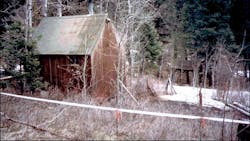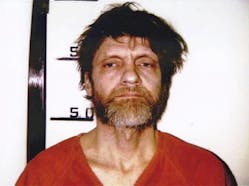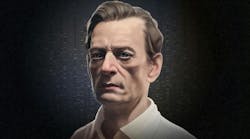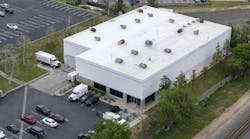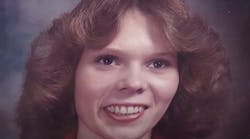Given the attempted bombing of the plane, the FBI took over the investigation, creating a task force to track down the University and Airline Bomber, or Unabomber. The agents dismantled and examined the bombs in the hopes they would contain clues leading to the capture of the bomber. Unfortunately, the bombs were made from simple household items, like wood, nails, and fishing line. Each of the bombs contained hidden clues, such as “FC” stamped somewhere on the bomb, and some contained notes and copies of books. Many bombs include tree bark or branches, leading investigators to believe the bomber had a fascination with nature and trees. The next target would further cement this suspicion.
June 10, 1980, Lake Forest Illinois. Percy Wood, President of United Airlines receives a package at his home. It appeared to be book, however upon opening it, an explosion caused serious burns and cuts to Wood. On October 8, 1981 the bomber moved outside of Illinois for the first time, but the attack was thwarted. A bomb placed at the University of Utah in Salt Lake City was defused by law enforcement. The bomber's focus remained on universities, as he carried out bombings at Tennessee's Vanderbilt University, and California's UC Berkeley in the Summer of 1982. A Secretary suffered burns after opening an explosive package addressed to a professor at Vanderbilt, and a professor at Berkeley suffered similar injuries after moving a box labeled as lab equipment left in a classroom. The box exploded upon being picked up, showing in increasing sophistication in the bomber's techniques.
The Unabomber took a hiatus for a few years before picking up where he left off at UC Berkeley. On May 15, 1985, a Berkeley graduate student lost four fingers when a box exploded as he moved a three-ring binder on top of it. The next day a package was delivered to Boeing Aircraft in Auburn Washington. The box was of course another bomb, but it was disarmed after police were contacted about the suspicious package. November 15 of that year, the Unabomber expanded his reach when a professor and his assistant at the University of Michigan were injured when a package claiming to contain a student's dissertation exploded when opened.
Stepping outside his norm of university and airline attacks, the Unabomber decided to target computer stores next, earning his first fatality in the process. December 11, 1985, in Sacramento, California, Hugh Scrutton, a computer store owner, found a piece of wood, covered in nails, in his parking lot. The piece of wood turned out to be a shrapnel bomb, killing Scrutton when he moved it. Another computer store owner suffered moderate injuries from a similar type of bomb outside his store in Salt Lake City, Utah on February 20, 1987. Fortunately for the FBI, for the first time since the investigation began, the bomber was scene. A witness saw a man in the parking lot of the store just before the bomb went off. Using the witness' description a now famous sketch was created, depicting a hooded man with aviator sunglasses. It appears the sketch made the bomber more cautions, as he would take an extended break from his attacks.
As the search for the Unabomber grew, more than 150 investigators would become involved in the case, between agents from the FBI and ATF, as well as inspectors from the United States Postal Service. Using recovered bombs, investigators did everything they could to obtain clues about the bomber's identity. The Unabomber, however, proved even more intelligent than first thought, going to great lengths to keep law enforcement off his trail. The bombs, despite their sophisticated construction, were still made from basic household items, along with homemade components, and precautions were taken to ensure no fingerprints were left behind. Other than backgrounds in education and technology, there were no known connections between the targets. Investigators used what evidence they did have to create a profile for the bomber, hoping to narrow down their location and motives. The FBI theorized the bomber was originally from Chicago—and later lived around Salt Lake City and San Francisco, but had difficulty determining anything else.
On February 26, 1993, terrorists detonated a bomb beneath the World Trade Center, resulting in six deaths. Naturally this gained global attention, and investigators believe this coaxed the Unabomber to resume his campaign. June 22 of that year, a geneticist working at UC San Francisco lost three finger and suffered various other injuries after opening an envelope bomb sent to his home. Two days later a Yale Computer Scientist lost his right hand after opening a package bomb delivered to his office. From here, the Unabomber shifted his focus away from universities and professors, targeting an advertising executive and a timber industry lobbyist.
Thomas Mosser, an advertising executive for a public relations firm, received a package in his North Caldwell New Jersey home on December 10, 1994. Mosser was killed by the resulting explosion when he opened the package. On April 20 of the following year, Gilbert Murray, president of the California Forestry Association, suffered the same fate in Oakland California, when he opened a package sent to his office, addressed to the former association president. With three deaths under his belt, the Unabomber decided it was time for his message to be heard. Months after the Oakland bombing, he sent a massive manifesto to some of the nation's largest newspapers, demanding his work be published, otherwise there would be more death. In the interest of public safety, and in hopes readers may be able to identify the writer, the 35,000 word Unabomber manifesto, titled “Industrial Society and Its Future” was published.
A $1,000,000 reward was offered by the FBI for information leading to the Unabomber's arrest. After the publication of the manifesto thousands of tips came in over the course of several months, but one stood out among the rest. David Kaczynski, an assistant director for a homeless youth shelter in New York, saw the manifesto after his wife brought it to his attention. She thought the essay sounded familiar and asked her husband to compare it to letters written by his older brother, Theodore. After reading the manifesto, David hired a private investigator to watch his brother, and later an attorney to act as a liaison to the FBI. David informed the FBI of the similarities in the writings, and that his brother, “Ted,” was living in a small cabin in rural Montana. David also stated Ted grew up in Chicago, taught at UC Berkeley, and moved to Salt Lake City, just as profilers suspected, before later becoming a recluse in his cabin.
Born in 1942, Ted Kaczynski was a loner as a child, but a remarkable student. He graduated high school early and attended Harvard University at only 16 years old. There he earned a bachelor's degree in mathematics, and later a doctorate in same from the University of Michigan. His high level genius IQ of 167 would carry him far, and he would go on to teach geometry and calculus at UC Berkeley at age 25, leaving there in 1969. After two years back home with his parents in Illinois, he retreated to the cabin, intent to live on his own, self sufficient, and away from society. In the coming years Ted would watch as the forests surrounding his home were demolished in favor of real estate development. Furious his solitude was being taken away, Ted sought to sabotage the growing construction sites, but his vandalism was not enough to stop the coming neighborhoods. His mind set on revenge, Kaczynski made it his mission to have his message heard, and would bring harm to those advancing the technology and industries that were encroaching on his world. Using the guise of the Freedom Club, or FC, Ted posed as a group of anarchists, though he worked alone. He went on to construct, mail, and even deliver in person his bombs. He finally put his thoughts into writing, insisting the world see his work. His massive, rambling stance on technological advancement being highly detrimental to human life and freedom, was published in The New York Times and The Washington Post.
Provided with Ted Kaczynski's letter's, the manifesto, and everything they knew about the bombs, analysts were able to determine they all came from the same source. With this evidence a search warrant was obtained. Agents surrounded the cabin and forcefully removed Kaczynski after a struggle. He was held in FBI custody while the search warrant was carried out, and it wasn't long before the agents were certain the 17-year-search was over, and they had their man. Inside the cabin was an original copy of the manifesto, bomb making materials, a live bomb, and more than 40,000 pages of notes, detailing his experiments and the Unabomber attacks. Now facing a mountain of evidence of his misdeeds, Ted Kaczynski plead guilty to ten counts of illegally transporting bombs, and three counts of murder. Kaczynski was given eight life sentences, and currently resides in a maximum-security prison, where he will remain until his death.
Ted Kaczynski, an astounding genius, was the center of one of the largest, and longest manhunts in American history. Not because he was good at hiding, but because of his unique life. Due to his high level intellect, agents thought they were looking for someone a decade older. This, combined with his careful and meticulous approach to his crimes, kept him from being identified for 17 years. Over a decade and half of diligent investigation and police work yielded very little results, but in the end it was the madman's obsessive need to be heard, and a sorrowful brother which stopped the terror.
